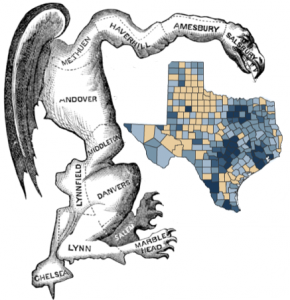Latinos In Congress Are In Texas, More May Be On The Way
 The Texas congressional redistricting map is out and, as is always the case with these things, there are winners and losers. One big winner may be San Antonio — one of the largest and most Latino cities in the country — as a new proposed district will almost ensure a Latino from that city be elected to Congress. But, for the same reason, there will also be losers in this Latino-heavy state.
The Texas congressional redistricting map is out and, as is always the case with these things, there are winners and losers. One big winner may be San Antonio — one of the largest and most Latino cities in the country — as a new proposed district will almost ensure a Latino from that city be elected to Congress. But, for the same reason, there will also be losers in this Latino-heavy state.
First, it’s important to note that a recent Census report found that 51 of 82 Latino-majority counties are in Texas. So when we start to consider congressional redistricting, which is based mostly on Census data (and a good dose of politicking, too), it becomes prudent to consider Texas not only as another state of the union, but rather, as an important seat for Latino power across the country.
That said, here are a few highlights as reported by the Houston Chronicle:
- …the new map does not create a “safe” Hispanic Democratic seat in the Dallas-Fort Worth area. At best, the mapmakers created an opportunity for a D-FW Latino to compete for the 6th District seat now held by Republican Joe Barton of Ennis…
- San Antonio is a big winner. It gets the lion’s share of a “new” district that stretches from Travis County to Bexar, picking and choosing Hispanic pockets along the I-35 corridor. San Antonio also dominates districts that radiate out of the Alamo City and now held by Canseco, Republican Lamar Smith and Democrat Henry Cuellar.
- South Texas Latinos are big winners. They get a “new” district from Corpus south to the Mexican border (most of former Rep. Solomon Ortiz’s old 27th District) and the “new” Austin-San Antonio district (which really isn’t the Doggett district – there’s only a small bit of Doggett’s current district in there).
- Houston is a net loser and Harris County Hispanics are huge losers. There is no new Hispanic district. Harris County minorities are victims of the basic pack-and-split strategy used by the GOP in the Houston and Dallas areas.
The Chronicle is also quick to point out that, while it may seem that the GOP-controlled Texas legislature “created” three new Latino districts, they did it while they also destroyed several that were already in existence. There’s no real change, despite the fact that Latinos accounted for a majority of the population growth that created the new seats in the first place.
What does happen with these new boundaries, however, is that it becomes obvious that Latino political power is a threat to the dominant Republicans in Texas, and so they are trying hard to clamp it down for the next 10 years. San Antonio’s new congressional district is huge for one of the biggest cities in the nation, and it’s likely that some big name politicos in that town — State Rep. Joaquín Castro or State Sen. Leticia Van De Putte — may just take a chance on running for Congress.
Look at the proposed map here, how do you think Latino voters make out?
Follow Sara Inés Calderón on Twitter @SaraChicaD
[Image Created By Census And Elkanah Tisdale]
